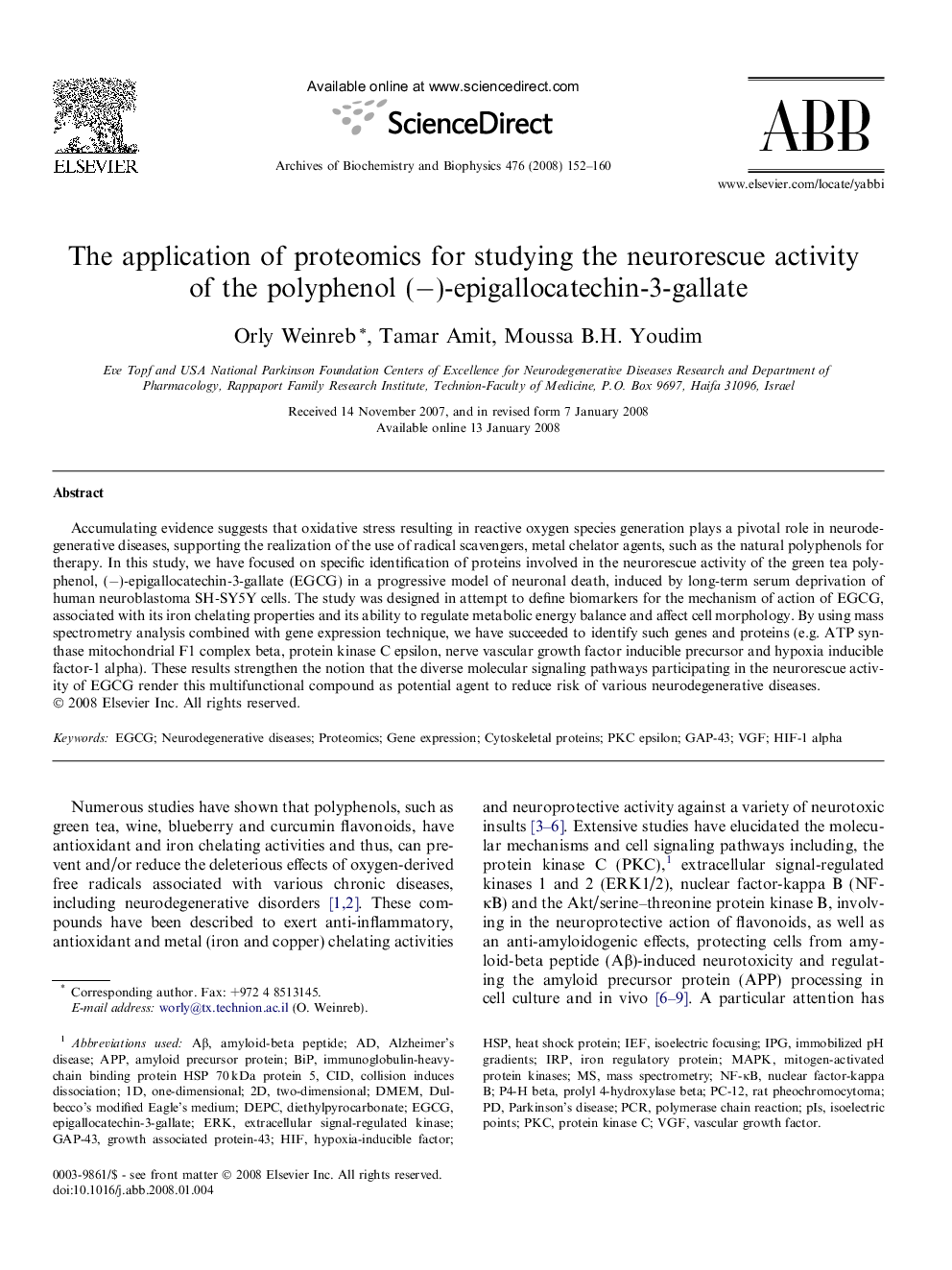| Article ID | Journal | Published Year | Pages | File Type |
|---|---|---|---|---|
| 1926671 | Archives of Biochemistry and Biophysics | 2008 | 9 Pages |
Accumulating evidence suggests that oxidative stress resulting in reactive oxygen species generation plays a pivotal role in neurodegenerative diseases, supporting the realization of the use of radical scavengers, metal chelator agents, such as the natural polyphenols for therapy. In this study, we have focused on specific identification of proteins involved in the neurorescue activity of the green tea polyphenol, (−)-epigallocatechin-3-gallate (EGCG) in a progressive model of neuronal death, induced by long-term serum deprivation of human neuroblastoma SH-SY5Y cells. The study was designed in attempt to define biomarkers for the mechanism of action of EGCG, associated with its iron chelating properties and its ability to regulate metabolic energy balance and affect cell morphology. By using mass spectrometry analysis combined with gene expression technique, we have succeeded to identify such genes and proteins (e.g. ATP synthase mitochondrial F1 complex beta, protein kinase C epsilon, nerve vascular growth factor inducible precursor and hypoxia inducible factor-1 alpha). These results strengthen the notion that the diverse molecular signaling pathways participating in the neurorescue activity of EGCG render this multifunctional compound as potential agent to reduce risk of various neurodegenerative diseases.
